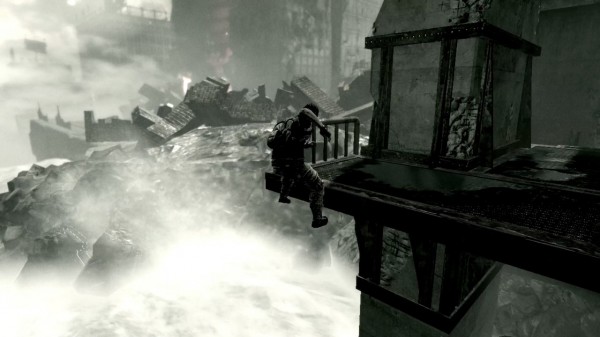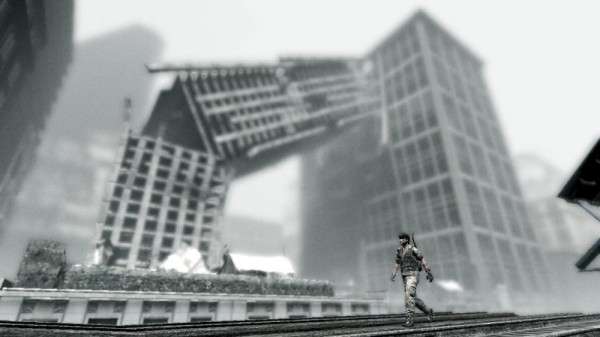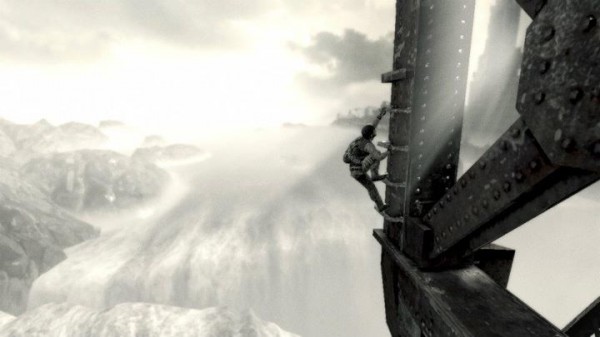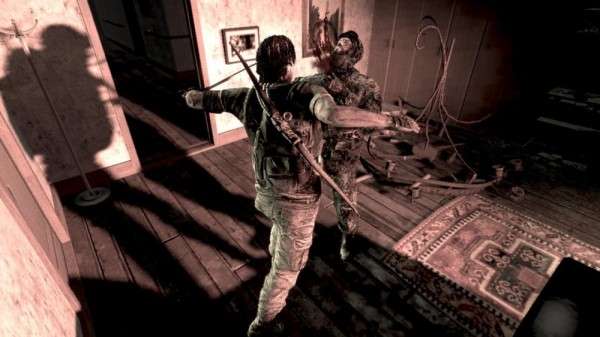
I Am Alive PS3 Review
Wrought with a troubled development cycle, I Am Alive earned its name before it was even available to download. It was passed between teams in mid-development, and the game’s actual nature, and even distribution model, remained ever elusive. Whatever you pictured the game would be, I’ll wager the final product is somehow simultaneously more conventional, more unique, and more heartbreakingly flawed.
The story spends little time setting up the premise. The world has gone belly up, ash clouds frequent the atmosphere, and your surroundings are the very epitome of a post-apocalyptic urban motif. Put in the shoes of protagonist Adam, your main objective is to find – and reunite with – your wife and daughter. After that jumping off point, I Am Alive quickly becomes surprisingly video gamey, evoking a Price of Persia with health packs and a measure of Silent Hill-esque pacing and faux openness.
You spend the majority of your playtime traversing the disaster-ridden environments, scaling crumbled building walls, balancing on fallen concrete beams, and making death defying leaps over various environmental gaps. The climbing is, as alluded to, very reminiscent of Ubisoft’s previous clingy efforts, and can best be described as a cross between Prince of Persia’s versatility and Splinter Cell’s slow rhythm and weightiness.

A stamina meter governs all of your physical efforts in the game, in addition to providing a sense of urgency. It’s factored into your jumping, climbing, hanging and running, and recharges immediately once you stand on solid ground. Should the stamina meter run out, you can perform an act of “Extreme Effort”, which reduces the gauge permanently. When you lose your entire stamina gauge, you are utterly exhausted, unable to climb or run. Straining yourself further will instead deplete your health gauge, and in order to restore both you’ll need to utilise support items.
Sparsely littered throughout the game are med kits, painkillers, soda cans, water bottles, soup cans, as well as rarer items like wine bottles and fruit. Some of these restore your stamina meter (useful for mid-climb reinvigoration), some refill your health, and some will rebuild your stamina gauge. You can opt to either consume these yourself, or save them to help other survivors that you stumble across. As a token of gratitude, survivors will rattle off a few lines of dialogue that shed some light on the backdrop to the game, but more importantly; they will grant you a shiny new “Retry.”

Because in spite of its survival motif, or perhaps in an attempt to maintain it, I Am Alive employs what’s essentially an old school lives system. When you run out of Retries, you start over from the last checkpoint. Especially on the harder difficulty settings, they’re hard to come by outside of helping people.
But not all survivors are as helpless – or helpful. You frequently walk into situations where combat is necessary. Usually showing up in twos or more, enemies come in a few different flavours. Some are armed with guns, some with machetes, some are bigger and more “alpha”, and some are more feeble and henchmen like. They begin by simply threatening and approaching you, and that’s when the various types are significant, as you”ll want to take out the bigger threats and “leader” types to increase your odds of survival. You can “surprise kill” one opponent before you’re in any immediate danger, and then keep the others at bay momentarily with a firearm as you reposition yourself to tackle the situation efficiently.

The real challenge in dealing with enemies is conserving ammunition. It’s not uncommon to be completely out of bullets, having as few as five rounds at the most. Environments therefore come into play, as you can kick people off ledges and into fires by ordering them around at gunpoint. It’s also possible to make enemies surrender and then incapacitate them with a knock to the head.
As dynamic and intriguing as this sounds, however, the recipe for these encounters quickly starts to repeat, and every situation soon becomes transparently rigid, predictable and void of real urgency. And sadly, similarly, almost all of the game’s various systems turn on it eventually, undermining the very intent behind their implementation.

The stamina gauge serves to illustrate the effort, and impending danger, of climbing around without a plan. You’re encouraged to carefully consider where to go, when to consume water and use climbing gear to rest. Meanwhile the Retries act as incentive to generally employ caution. The problem is that the game never develops a robust risk/reward system around these actions.
For example, Adam will articulate “I can’t drop that far” when you try to let go from a high position, and the game outright prevents you from doing it. Should your stamina completely run out, however, causing you to fall to the ground anyway, you often make the drop without so much as a sliver of health removed. You could potentially waste support items for no reason because the game implies you have to.

Scarcity of ammo prompts you to take out enemies in smart ways, but iffy contextual detection only serves to discourage taking advantage of the environments. It’s all too common to press the button to kick a guy from a rooftop, only to lock into a lengthy “struggle” animation instead because the normal melee kill is triggered. This inevitably results in death, as his buddies immediately rush and murder you. At one point, the game half-heartedly suggests sneaking up on guys to perform a surprise kill. This is true, to a degree, but stealth is rendered useless by the camera’s fixed position to the right of Adam, only allowing you to peek around corners to the left.
The lives system ends up making absolutely no sense, especially with checkpoints and Retry points often overlapping. Whether you use a Retry or not, your progress since that point is reset. However, if you run out of retries, and load a checkpoint, you are given back all the Retries in your possession when you triggered that checkpoint. This creates the backwards situation of not wanting to progress if you lost half of your retries, knowing you can just use up the remaining ones to get them all back.

Grim death and arbitrary limitations make it seem like Ubisoft wanted to ride on the waves made by Demon’s Souls, but replacing trial and error with something more organic has only been to the game’s detriment. Pile graphical glitches and frame rate issues on top – attributed to this less-than-stellar PS3 port – and it becomes decidedly difficult to recommend.
Fans of Tomb Raider and Prince of Persia will doubtlessly find the occasional thrill in I Am Alive’s platforming elements, but its shortcomings are nevertheless increasingly glaring. A myriad of baffling design decisions result in a game that can’t seem to get out of its own way. There is absolutely nothing wrong with making a punishing game and rewarding the player for mastering its unforgiving gameplay systems. But you’re not wrestling with systems here – you’re wrestling with their integrity.
